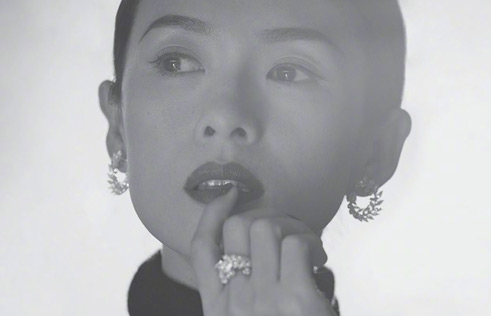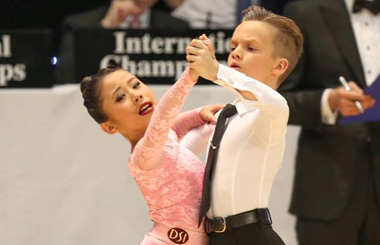Changes in nightlife
Richness of nightlife is one of the yardsticks used to measure a region's living standards. Changes in the ways people kill time at night reflect the social progress of China over the past 60 years.
|
 A bar hugs the promenade of Beijing's Shichahai Lake. |
The 1950s and 1960s: New Arts
"In the 1930s Shanghai had such scintillating nightlife. It was known as the 'Paris of the Orient'," reminisced an elderly Shanghai resident. "There were various kinds of places to let your hair down in the city, such as nightclubs, ballrooms, billiards rooms and small cinemas. But they were all closed down in the 1950s. The best-known dog track was turned into a cultural square. On weekends performances were held for large crowds, some by foreign troupes that were mainly from socialist countries." Dance parties, films and concerts regularly enlivened local parks and squares. Of course, the most popular were dramas, operas and films on new themes.
After the founding of the People's Republic, theaters and cinemas became state-owned, and performers were turned into state workers. The government mobilized these resources to set up standardized art productions. With the rise in specialization, artists could devote more energy and passion to creating volumes more work catering to the tastes of the public, particularly younger viewers.
"At that time, the People's Theater was really flourishing. It specialized in new dramas, and so attracted many college teachers and students. People stood in long lines to buy tickets," remembers Zhang Caixia, aged 68. She worked as a ticket-seller for 18 years at the People's Theater of Xi'an, Shaanxi Province. "At that time, tickets were available at three prices: 7 jiao, 5 jiao and 3 jiao (RMB 1 = 10 jiao). The price was a little higher than a movie ticket, but many people preferred to watch the recent works staged at this theater, regarding it as a decent, fashionable cultural indulgence."
"Most artists and troupes performing at the People's Theater were famous nationwide," said Han Qi, who was on staff there in 1958. "Sometimes performances ran for several days. The 1,000-seat theater was filled to capacity, even the aisles. It was standing room only."
The 1970s: Outdoor Film Shows
The 1970s were dominated by the "Eight Model Theatrical Works" and outdoor film shows. "People who experienced that period can all hum the tunes of the 'Model Peking Operas.' There is a saying 'eight shows for 800 million people,'" recalls Lu Shouyi, aged 73. "The revolutionary-themed Peking operas were made into films, aired on the radio and depicted in posters everywhere. Every day we heard and saw them." Model Peking Opera started in the middle to late 1960s, a product of the "cultural revolution." It reformed traditional Peking Opera by borrowing the stage arts of modern drama, adopting realistic settings, props and costumes, and using symphony orchestras in place of traditional musical instruments.
Outdoor films appeared in the early 1950s, but were not the most popular of entertainments. However, during the "cultural revolution," when there were almost no other recreational activities, outdoor screenings drew regular evening crowds.
"Outdoor films were free of charge. In cities, shows were staged in playgrounds or dining halls, while in the countryside they took place on the threshing grounds. After supper, people brought their children and stools to stake out good places, and latecomers had to sit or stand on higher ground, with their children on their shoulders. In better-off places there were actual projection rooms, and in hard up villages the power supply was a person pedaling a bicycle to generate electricity," laughed Zhang Yiwu, a professor at Peking University. Watching outdoor films was both a cultural and social activity, essentially a gathering of neighbors. Like cinemas anywhere they also provided opportunities for young people to find lovers.
After the end of the "cultural revolution" in 1976, some films that had been banned were once again projected in public, inducing a new "fever" for outdoor movies. People had access to cinema in different styles and from different countries, including Hollywood movies.
Many who grew up in the 1960s and 1970s retain special feelings towards outdoor film shows. Mr. Yu, a media worker in his mid-40s, said, "I remember that before the main film was screened, a newsreel on a political event or a documentary on medical or agricultural sciences was shown. It was these minor reels that left a deep impression on me – they were my first scientific education!"
The 1980s: Televisions Become a Household Item
Following the launch of reform and opening up, nightlife became more diversified in the 1980s. Attending television university (higher education programs in which most teaching was done via TV) or night school became popular among young people who had been deprived of higher education during the "cultural revolution." Listening to radio was also a night "entertainment" for English lovers who were curious about the outside world. They tuned to the Voice of America under a quilt or in a dark corner, since listening to foreign broadcasts was deemed equivalent to treason.
Courting in a park was also the thing to do then. "In the evening all parks were filled with lovers, who had no other place to go. Now people have a wealth of choice, such as cafés, bars, discotheques and teahouses. But in those days there were no vacant seats in a park. It is said that on the Bund in Shanghai, each bench was occupied by two pairs of lovers, each engaged in their own embraces and kisses. So I appealed for places to be provided for young people to embrace and kiss," said Wang Meng, former Minister of Culture.



















